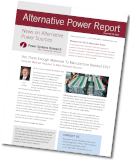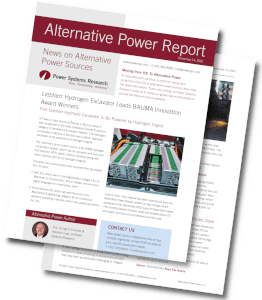Are Hydrogen Engines in Your Future?

According to newly published research by Interact Analysis, hydrogen internal combustion engines (H2 ICE) are forecast to be sold in 220,000 vehicles in 2035.
On the plus side, H2 ICE vehicles have some notable advantages. The engine technology is reasonably similar to diesel engines, enabling use of existing knowledge, design and production vehicles. The vehicles can deliver high power, work with impure fuel, work in dirty and dusty conditions and refuel quickly.
On the downside, there is no hydrogen infrastructure in place in almost all locations in the world, there is a lack of awareness about the technology and limited development so far. Most importantly, the current cost of hydrogen fuel is high – it will need a big reduction before the vehicles can become competitive. Even at half the cost of today, H2 ICE vehicles do not have a good total cost of ownership. The cost of the engine is not substantial, but the cost of the tanks adds a lot to the cost of the vehicle, then there is infrastructure and above all hydrogen fuel.





